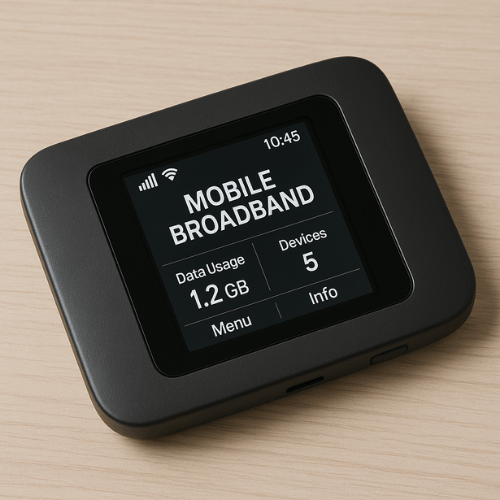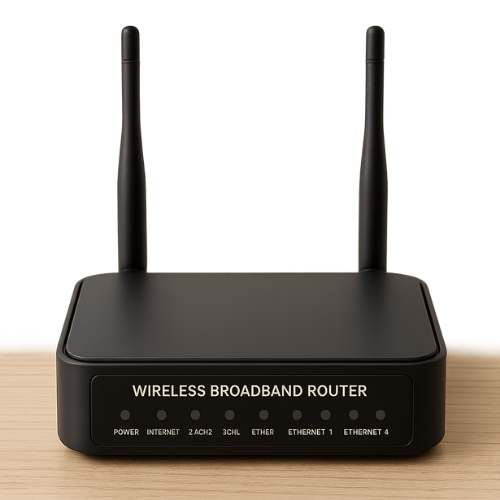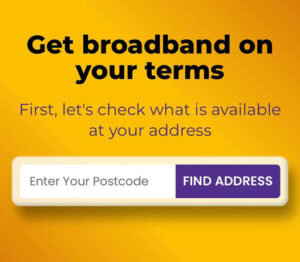Broadband Without Landline: Your Flexible Internet Guide

What Is Broadband Without a Landline?
Broadband without landline refers to internet services that do not require a traditional phone line to function. These options are perfect for individuals who have moved away from traditional home phones or simply want to reduce their monthly expenses. The absence of a landline means fewer cables cluttering your space, and often, a simpler installation process. Additionally, this type of broadband can be ideal for those who frequently move residences, providing a hassle-free setup in each new location.
With technological advancements, the need for a physical landline has significantly diminished. Many internet service providers (ISPs) have adapted to this change by offering standalone broadband services, which are designed to meet the increasing demand for seamless digital connectivity. These services often come with various speed and data options, allowing you to tailor your internet experience to your specific needs without the unnecessary burden of a landline.
Why Choose Broadband Without a Landline?
Choosing broadband without a landline can offer several benefits:
- Cost Savings: Eliminating the landline can lower your monthly bills. Many households find that they rarely use their landline, making it an unnecessary expense. By opting for broadband without it, you can allocate those funds to other necessities or upgrades.
- Flexibility: You can choose from various types of internet services that suit your lifestyle. Whether you’re a casual browser or a heavy streamer, there’s a broadband option that fits your needs without the confines of a landline.
- Simplicity: Without the need for a phone line, installation can be quicker and less intrusive. This streamlined process can also mean fewer disruptions in your service, as fewer components can malfunction.
Moreover, broadband without a landline is ideal for those who value mobility and adaptability. As remote work and digital nomadism become increasingly prevalent, having a flexible internet solution can support a modern, on-the-go lifestyle. It allows you to stay connected without being tethered to a fixed location, providing the freedom to work or explore wherever you choose.
Types of Broadband Without a Landline

Fiber Optic Internet
Fiber optic internet is one of the fastest broadband options available. It uses thin strands of glass or plastic to transmit data as light, providing high-speed internet access. If you’re looking for reliable and fast internet without a landline, fiber optic is a great choice. It’s particularly beneficial for households with multiple users who simultaneously engage in bandwidth-intensive activities like streaming, online gaming, and video conferencing.
Pros:
- Extremely fast speeds: Fiber optic technology supports gigabit speeds, which are significantly faster than traditional DSL or cable internet. This means less buffering and faster downloads, enhancing your overall internet experience.
- Reliable and stable connections: Fiber optic cables are less susceptible to interference and degradation, offering consistent performance.
- Ideal for streaming, gaming, and large downloads: With high speeds and low latency, fiber optic internet is perfect for tasks that require a lot of data transfer.
Cons:
- Limited availability in rural areas: Fiber optic infrastructure is still expanding, and while urban areas are often covered, rural locations may have limited access.
- Can be more expensive than other options: The advanced technology and infrastructure requirements can make fiber optic plans pricier compared to other types of broadband.
Mobile Broadband
Mobile broadband is a flexible option that uses the same networks as your smartphone. You can connect to the internet using a mobile broadband device, such as a dongle or a mobile hotspot. This type of broadband is perfect for those who need internet on the go. It’s an excellent option for travelers, students, or anyone who needs reliable connectivity outside their home.
Pros:
- Highly portable and convenient: Mobile broadband devices are compact and easy to transport, making them ideal for use in multiple locations.
- No installation required: Simply plug in the device or activate the hotspot, and you’re connected.
- Pay-as-you-go options available: Many providers offer flexible pricing plans that allow you to pay only for the data you use.
Cons:
- Data limits may apply: Unlike fixed broadband, mobile broadband plans often come with data caps, so heavy users may find it restrictive.
- Speeds can vary based on location and network coverage: While mobile broadband can be fast, its performance depends on your proximity to cell towers and the network’s capacity.
Wireless Broadband
Wireless broadband provides internet access using radio signals instead of cables. It’s an excellent choice for areas where wired connections are not feasible. This option involves setting up an antenna or satellite dish to receive the internet signal. It can be a lifeline for those in rural or remote locations where other broadband options are unavailable. Uswitch Starlink satellite broadband survey.
Pros:
- Ideal for rural or remote areas: Wireless broadband can reach places that fiber and cable cannot, providing essential connectivity in underserved regions.
- No need for a landline or physical cables: The absence of cables means less maintenance and easier setup.
- Can cover large areas: Wireless signals can be broadcast over wide distances, making it suitable for expansive properties.
Cons:
- Weather can affect signal quality: Adverse weather conditions like rain or snow can disrupt the signal, affecting internet performance.
- Installation may require professional help: Setting up the necessary equipment, such as antennas or dishes, might need technical expertise.
Getting Started with Broadband Without a Landline

Assess Your Needs
Before choosing a broadband option, consider your internet usage habits. Do you stream videos regularly, or do you mainly browse the web? Understanding your needs will help you select the right service. Consider factors like the number of users in your household, the types of devices you use, and your typical online activities. This assessment can help you determine the required speed and data capacity.
It’s also important to think about your future needs. If you plan on expanding your smart home devices or increasing your remote work activities, you might want a broadband option that offers scalability and can accommodate increased demand. By aligning your choice with both current and future needs, you ensure a sustainable internet solution.
Check Availability
Not all broadband options are available everywhere. Check with local providers to see which services are offered in your area. Fiber optic internet, for instance, may not be as widespread in rural locations. Use online tools and resources to map out coverage areas and identify which providers service your specific region.
Additionally, reach out to neighbors or local community groups for insights into the quality and reliability of different broadband services in your area. User experiences can provide valuable information and help you make a more informed decision. Keep in mind that availability can change over time, so it’s worth checking periodically for new developments or updates in service offerings.
Compare Plans and Prices
Once you know what’s available, compare different plans and their prices. Look for any data caps, speed limitations, and contract terms. Some providers offer bundled services, which can be cost-effective if you need multiple services. Make sure to read the fine print to avoid hidden fees or unexpected charges.
Consider not only the monthly cost but also any initial setup fees or equipment purchases that might be required. Some providers offer promotional rates for new customers, so it’s worth asking if there are any current deals. Comparing plans ensures you get the best value for your money while meeting your specific internet needs.
Consider Equipment Needs
Some broadband options may require specific equipment. For example, mobile broadband requires a compatible device, and wireless broadband might need an antenna or satellite dish. Ensure you understand what’s needed before committing to a plan. Check if the necessary equipment is included in the plan or if it needs to be purchased separately.
Think about the long-term costs associated with equipment maintenance and upgrades as well. Some providers offer rental options, which can be a cost-effective solution if you prefer not to invest in equipment upfront. Understanding these requirements will help you avoid unexpected expenses and ensure a smooth installation process.
FAQs About Broadband Without a Landline
Can I Have Broadband Without a Landline?
Yes, you can have broadband without a landline. Many providers offer internet-only packages that don’t require a phone line. These packages are designed to meet the needs of modern consumers who prioritize internet access over traditional phone services. They often come with flexible terms and a variety of speed options to choose from. For more on this trend, see Why the bell tolls for the landline.
Can You Have Broadband Without Landline Anywhere?
It depends on the availability of services in your area. Urban areas typically have more options like fiber optic and wireless broadband, while rural areas may have limited choices. As infrastructure continues to develop, more regions are gaining access to broadband without landline options. It’s important to stay informed about the latest offerings and expansions in your area.
How Do I Switch to Broadband Without a Landline?
To switch, contact your current provider to discuss canceling your landline service. Then, research and select a broadband package that fits your needs without requiring a phone line. It may involve a simple transition process, especially if you are staying with the same provider. Be sure to review any contractual obligations or cancellation fees associated with ending your landline service before making the switch. Learn more about how to switch broadband providers.
Making the Right Choice
Choosing the right broadband without a landline requires understanding your options, availability, and personal internet needs. By doing so, you can enjoy a flexible and cost-effective internet solution tailored to your lifestyle. Take the time to research and weigh the pros and cons of each option, considering both short-term and long-term benefits.
Final Thoughts
In the end, broadband without a landline offers modern convenience and flexibility. Whether you opt for fiber optic, mobile, or wireless broadband, you can enjoy fast and reliable internet without the need for a traditional phone line. Embrace the future of internet connectivity and explore the options available to you today. By making an informed choice, you can enhance your digital experience and stay connected with the world around you.



